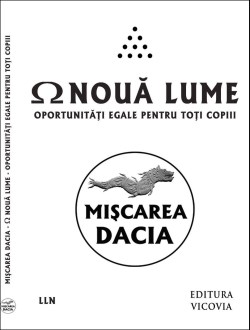Hyperian History Of The World (20th Century, Part 6)
Brice Merci – hyperian
Hyperian History Of The World (20th Century, Part 6)
In the 20th Century, the turbulent political events, resulting from the fracture of humanity, were reflected in the arts of the time. Music, visual art and even literature began to descend into extremes of experimentation, with the discarding of many, if not all, of the traditions of the various forms. Whilst this produced many brilliantly innovative results, it also had the effect of alienating popular audiences. Art ended up being almost appropriated by an intellectual, academic elite, with little regard for the tastes of ordinary people.
The greatest art throughout history had tended to find a balance between tradition and innovation. One of the most powerful art forms of the ancient world had been Greek Tragedy, which had been the model for Wagner’s concept of ‘Gesamtkunstwerk’ which he had utilised in his epic operas. The idea was to combine many art forms all at once in a single work. Greek Tragedy had been a visual experience, an aural experience, thanks to the singing of the chorus, and also a literary experience, with the retelling of ancient legends.
Yet the problem was that these works had no final, fixed form for posterity. The words of the plays were written down, so we know the basic content of the plays, and archaeology can give us an idea of what the visual elements might have been, yet we have no real idea what any of the music sounded like.
Since medieval times, composers had devised ways of writing down the music they were composing, so, for Wagner’s works for example, we know exactly how Wagner wanted the music to sound, as he wrote down the score, and we know what the text of the operas are and we also know some of the visual elements, thanks to a brand new technology of the 19th century, photography.
At the end of the 19th century, another brand new technology was developed which would transform the world – sound recording. Now, specific performances of music could be preserved for all time, rather than just the notes the composer wanted to be played being written down.
At around the same time, a final major technological innovation took place. The idea was to have a camera which took pictures continuously in rapid succession, and then for these pictures to be projected onto a screen also in rapid succession as they had been taken, to give the illusion of a moving image on the screen. This led to the birth of an extraordinary new art form, Cinema.
Cinema, although it began as a novelty, became the most complete art form, in terms of Gesamtkunstwerk, as it completely combines visual, aural and literary elements in a fixed form which can be reproduced over and over again.
Initially, of course, films were silent, as sound recording wasn’t yet able to combine with moving images. Very quickly after the invention of the new art form, Cinema developed from simply capturing events in reality, to showing fantastical creations of film directors. Sets were built to show wondrous worlds and actors were employed to act out stories in front of the camera. Directors also realised that they could combine footage in different ways after the footage had been shot, and films became edited together in all sorts of innovative ways, in order to produce films which told ever more challenging stories and produced every more fascinating imagery. Soon, the movies became big business as their popularity with ordinary people increased. In Hollywood, California, the movies became a huge phenomenon.
In 1915, American director David Wark Griffith, produced the first ‘Hollywood Blockbuster’, the 3-hour long ‘The Birth Of A Nation’. The film caused a sensation, and for all manner of reasons. Firstly, from a technical point of view, it represents the first complete expression of the art of cinema as we know it today. The film’s substantial length allowed for a long, complex story to be told. Griffith utilised all sorts of techniques of cinematic narrative, such as montage editing, camera angles, camera movement etc. to create a higher degree of emotional effect for the viewers. He even worked with a composer to create a musical score, specific to the film, the first in cinema history. Unfortunately, the other reason the film caused a sensation, was due to its highly controversial, and, frankly, despicably racist content, as the film tells the story of the American Civil War and its aftermath, focusing on the formation of the Ku Klux Klan who, in the film, are portrayed as the heroes!
Nonetheless, the film is a technical masterpiece which created the language of cinema that is still used today. Cinema would become the most influential and popular art form of the century, combining all art forms into one in ever more creative ways. Unfortunately, the big business side of the movies, particularly in Hollywood, has often had the effect of restraining the artistic elements in favour of more commercial ideas, and film directors have ever had to battle against producers to get their work to be how they want it.
In the 1920s, Cinema spread all over the world. In Germany, the most innovative were the expressionist directors like Fritz Lang and Friedrich Wilhelm Murnau, in Russia new technical ground was broken with the montages of Sergei Eisenstein, and in Hollywood the comedy genius of Charlie Chaplin and Buster Keaton flourished. Then, in 1927, the major revolution came. For the first time, in the film ‘The Jazz Singer’, spoken dialogue was heard, with Al Jolson uttering the immortal line, “Wait a minute, you ain’t heard nothin’ yet!”
Prior to this, the aural element of cinema had been purely musical, but now dialogue and sound effects became an integral part of cinema. The 1930s saw the solidification of the film soundtrack with great composers like Max Steiner and Erich Korngold, Hollywood went through the golden age of both gangsters films and horror films, and world cinema expanded with French director Jean Renoir and Japanese director Yasujiro Ozu.
The 1940s saw the appearance of one of the greatest figures in the history of cinema, Orson Welles. At a young age, Welles had already found great success in the theatre, both as an actor and as a director. He had then moved on to the radio and, in 1938, had caused chaos with his radio production of ‘War Of The Worlds’ in which he presented the alien invasion as if it were a breaking news story, which caused panic amongst many listeners who believed that actual aliens from Mars were invading Earth!
Welles then went to Hollywood where, thanks to his fame and notoriety, he managed to get an almost impossible contract. Despite being just twenty five years old and despite having never worked in cinema before, Welles managed to get a contract to write, direct and star in a film, with a sizeable budget and even complete artistic control, all much to the envy of many seasoned directors, many of whom had worked in Hollywood for decades and had never even dreamed of such a contract. The result was ‘Citizen Kane’, still regarded by critics as perhaps the greatest film ever made.
Welles had no real idea how to make a movie, yet used his considerable artistic genius to basically make it up, leading to one of the most original and innovate films of the time. Citizen Kane pioneered all manner of techniques, resulting in a masterpiece featuring beautiful visuals, great acting, a great script, brilliant use of sound and a wonderful score by Bernard Herrmann, all balanced into a single work of art which serves as a powerful meditation on the search for meaning in human life.
Unfortunately, despite this artistic triumph, Welles never again received such a contract and his other films, many of which were still masterpieces, never matched up to that first artistic success.
Nonetheless, Welles is a pivotal figure in cinema history. Welles showed that cinema had become a serious art form whilst still being a form of popular entertainment. Film directors now saw themselves as serious artists and cinema went on to give us the wondrous creativity of Alfred Hitchcock, John Ford, Akira Kurosawa, Elia Kazan, Ingmar Bergman, Federico Fellini, Luis Bunuel, Stanley Kubrick, Roman Polanski, Francis Ford Coppola, Martin Scorsese, Steven Spielberg, Theo Angelopoulos, Andrei Tarkovsky, Terry Gilliam, Quentin Tarantino, Bella Tarr, David Lynch and many others.
Despite these brilliant filmmakers, who have crafted cinema into one of the most powerful and expressive art forms in human history, the industry of the movies is a great example of the evils of modern capitalism. Unlike other art forms, cinema requires substantial capital in order to produce masterpieces. As such, directors, in order to acquire funding, have to make concessions to the money men, rarely enjoying the artistic freedom which Orson Welles had on Citizen Kane. Modern cinema is a pale imitation of what it once was. Despite technological advances, most movies today are simply rehashes of older ideas used to make vast amounts of money. Just look at the ‘Star Wars’ franchise which now churns out substandard material where the original films were brilliant, populist masterpieces.
Cinema has the potential to release the best of human creativity, yet is hampered by the evil of capitalism. In the Hyperian New World Order, once capitalism is brought under control, creativity and artistic quality will be the only reasons to make movies, freeing the artists from the chains of capitalism.
This magnificent synthesis of the arts, one of humanity’s greatest innovations, must be set free and allowed to create true wonders once again.












